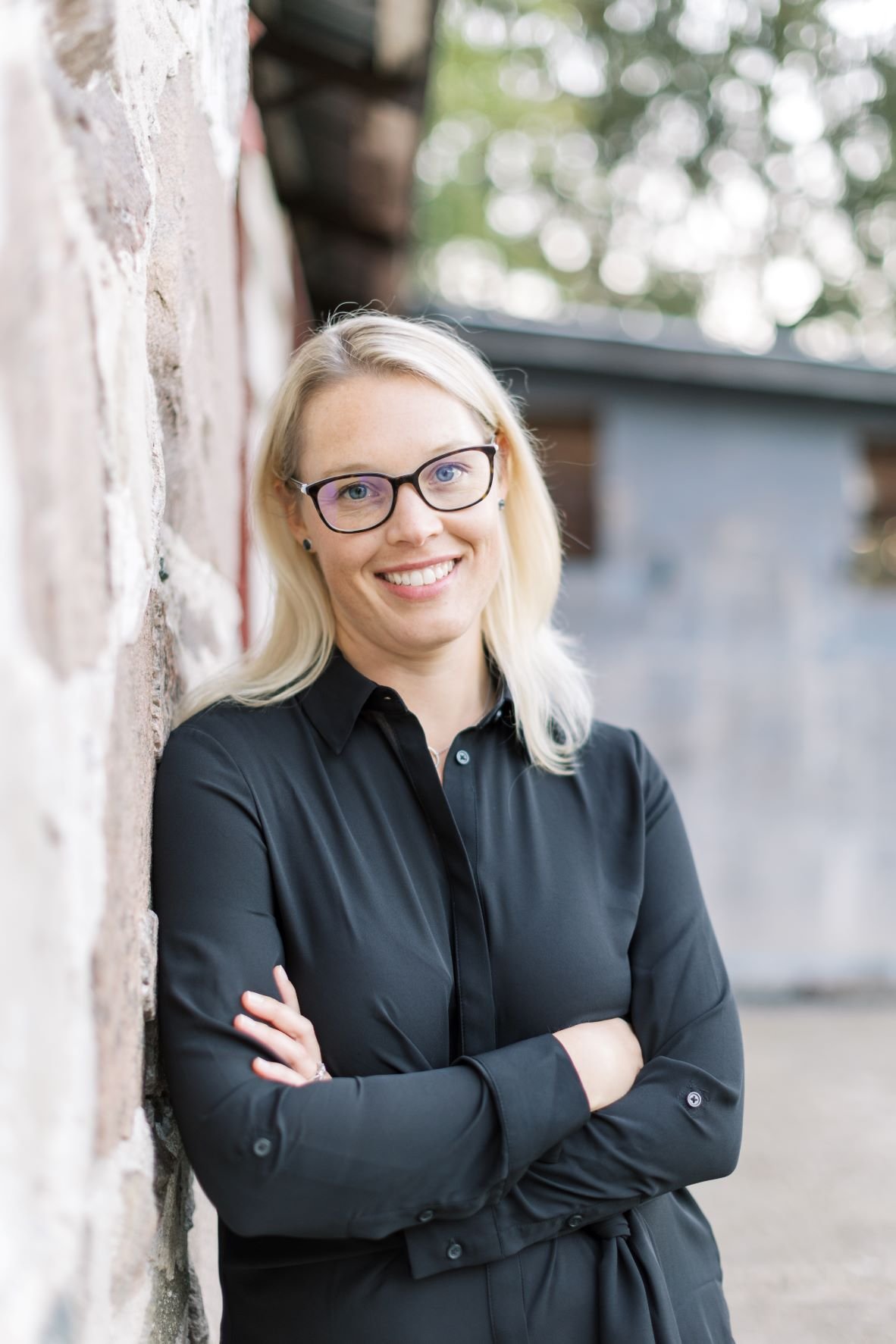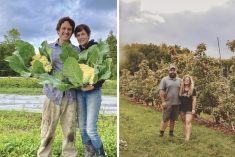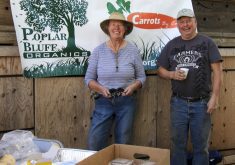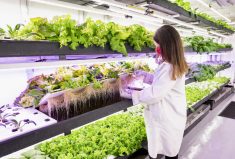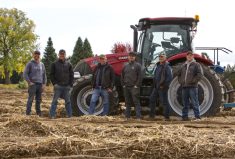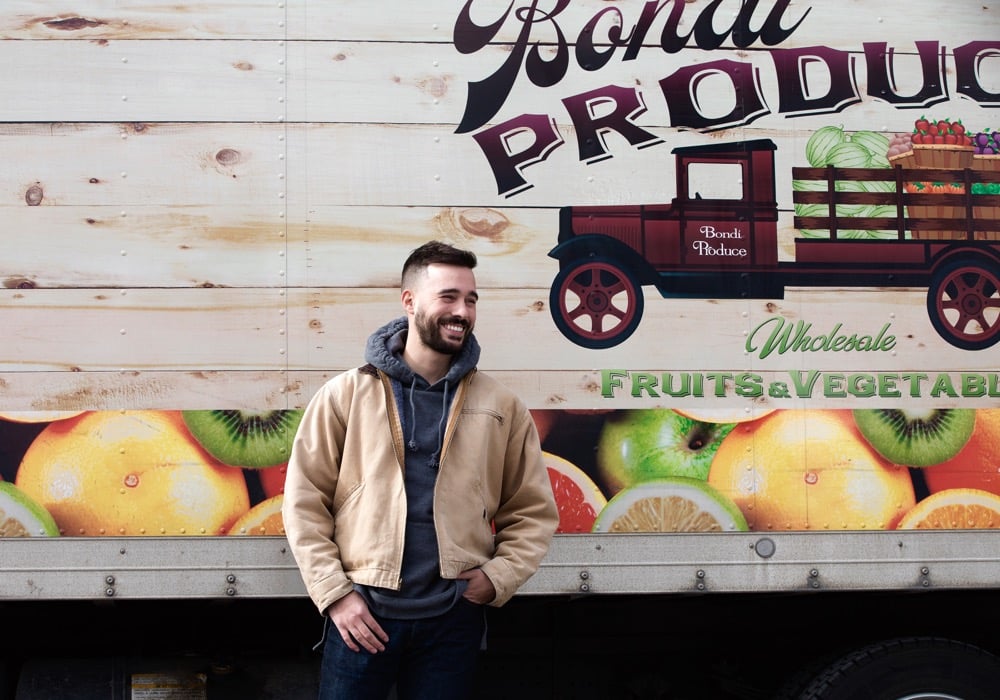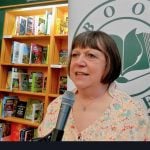Why does your farm need a vision?
To Jeannette French and her husband Brian, co-owners of Lennox Farms in Melancthon, Ont., the answer is simple.
“No matter your farm size, a vision is something that drives you every day. It’s born from your values and is the backbone of what you believe.”
Read Also

Could crop sharing be a viable option for your farm?
Crop sharing could be a good option for young and beginning farmers.
Six years ago, they made their farm vision official by putting it in writing and committed to live and manage their farm according to their vision: Healthy soil. Healthy food. Healthy communities.
Since Brian took over the farm management from his parents 15 years ago, the family has significantly diversified their operation. Their guiding principle has been their vision, connecting everything they do to health.
“We always had this health-conscious mindset, and we decided it was important for our customers and community to understand where we were coming from. Because everything we do comes down to healthy soil,” explains Jeannette. That’s why they posted their vision, mission and core beliefs to their website, lennoxfarm.ca.
As fifth-generation farmers, the French family has harnessed decades of experience in market gardening, growing 35 different crops and serving a diverse range of customers. The family manages 200 acres of vegetables, 300 acres of grains and cover crops, greenhouses and root barns.
One of the largest rhubarb growers in North America, Lennox Farm provides 90 per cent of in-season rhubarb to the Ontario market, and ships forced rhubarb grown in their root barns from February to May across Canada.
Their business focuses on fresh market sales of vegetables marketed through wholesale, retail and agri-tourism, reaching customers close to home, across Canada and the U.S. To operate the farm, the couple rely on 12 temporary foreign workers from Trinidad, 10 part-time seasonal employees, their three children and Brian’s parents.
Today, their vision is posted on a sign at their on-farm market, drives the themes of their customer newsletters and social media posts, and is incorporated into regular staff meetings and daily farm operations.

A guiding force
“A vision is about connection and intention. It’s about envisioning what the farm wants to grow into, both practically and spiritually. And it’s about feeling into the deeper ‘why’ of what you do and allowing that sense of purpose to guide decisions and actions,” explains Erin Deline, business and human resources consultant with ThriveMinds.
Deline says she’s excited to see more farmers develop visions for their farms as a way to formalize their values and guide their business, particularly among the younger generation who bring fresh perspectives. She’s noticed an uptake in new and multi-generation farms creating a vision that everyone can get behind and work towards.
“It’s encouraging to see that Canadian farmers are increasingly setting their sights on bigger goals and higher aspirations,” says Deline. “A vision can help this process because it is about creating something that feels right, inspires people and is rooted in the heart. A vision should create clarity and foster purpose for everyone involved.”
Deline works with business leaders to enhance management performance and drive sustainable success. She says developing a vision is easy and can be as informal as applying themes to management decisions and employee communications, like focusing on collaboration, resilience and integrity. These themes can also show up as core values that can easily be incorporated into a workplace culture and used to guide growth or success.
Farmers can develop a vision themselves or get help from an advisor.
Deline explains that visions are typically created through a collaborative process, where key stakeholders, including farm owners, managers and sometimes employees, come together to reflect on a farm’s values, mission and future goals. This is often done with an external facilitator, but no matter how a vision statement is accomplished, she recommends farmers focus on their values, what’s important to them and future aspirations.
She also notes a vision can change. “You want a vision that is broad enough to grow, and over time, you may need to re-evaluate and make changes.”
Establishing a vision can help farmers understand their long-term goals and plan for the future. And, as vision statements become more common on farms, they are also being used to attract and onboard employees. A business vision can identify necessary roles and skill sets required and, in turn, attract employees with the skills and values that align with the employer.
“When everyone understands how their role contributes to and fits with a farm’s vision, you foster a collective spirit and sense of fulfillment that can attract and retain valuable employees, not to mention drive success,” says Deline. She notes that a strong vision not only guides a company, but also inspires those involved, from owners and managers to employees and customers.
Vision guides decisions
A farm’s vision can have an impact on everything from how decisions are made to how to attract employees. And creating a vision can become a natural part of farm business planning.
When it came to putting their vision on paper, the French family looked internally to determine what was important to them. As a mid-sized farm, most responsibilities, such as creating a vision, business planning, research, human resources and marketing, fall to them because of their budget and time constraints. Brian says that while their farm size is just right for them, it is a limiting factor to growth. If they want to grow, it needs to be incremental and based on their availability and capital. “We can’t get too big because we are already maxing out our labour needs and have a hard time filling those roles. If we scale down, we would have to give up what we’ve worked for.”
Ursina Studhalter raises 280 ewes with her husband Andrew Bos in Shawville, Que. Their desire to grow and expand is repeatedly assessed, but every decision they make is guided by their vision to be efficient and love what they do.
“It’s a very informal approach, but every choice we make on the farm comes back to feeling happy about what we do. If I can’t sleep, I know something has to change,” she says.
Studhalter and Bos purchased their farm in 2017 and retrofitted the former horse farm to accommodate their flock. One of their first decisions was based on their desire to be efficient and minimize labour as much as possible. Consequently, they invested in the Katahdin breed that grows a hair coat like wool but doesn’t require the labour-intensive task of shearing. Health challenges with their flock (testing positive for maedi-visna), a car accident, the birth of their son, and land prices have also influenced decisions about whether to expand their flock and acreage.
Despite changes and challenges, they are consistent in their plans and overall vision for their farm and family: to maximize enjoyment and minimize stress.
With a focus on flexible outcomes, Studhalter’s approach incorporates both personal and farm business aspirations. As a chartered professional accountant, Studhalter is diligent about tracking numbers and managing the farm’s finances, but she values their goals and work-life balance just as much. The couple has established a five-year plan that supports their vision through objectives, measurements and goals, and she divides their timeline based on seasons and lambing schedules.
Planning happens organically for Studhalter and her husband. They often talk about the day-to-day farm management while weighing lambs, but the big decisions are written down. The couple each keep a journal where they record farm activities and compare notes. Included in the journals are their goals and production targets. “We’re very detailed in our management, while at the same time, we’re guided by our consistent vision of enjoying what we do and our surroundings,” says Studhalter, who shares their farm journey on her Farming Frontiers Studio blog.
“There’s always a detour,” Studhalter notes, pointing to the maedi-visna diagnosis as an example. “We simply reassess our growth targets and vision for the future and make decisions that feel right for us, our animals and our family. We’re happy staying at the right size to maintain our enjoyment.”
Future focused
Deline reminds farmers that setting goals and unifying around a common vision provides clarity and direction, which are essential for success.
A business or financial plan typically focuses on specific measurable goals, budgets and timelines.
A vision goes beyond numbers.
Deline points out that a vision can address the more intangible, yet equally important “grey areas” that can get overlooked when crunching numbers.
And, because many farms aren’t just businesses, but also lifestyles for farmers and their families, a visioning exercise can also be an opportunity to combine personal interests with business objectives.
“Mixing personal goals with professional visions is about aligning core values and passions,” explains Deline. “And the outcomes can be amazing, because a person or business is more likely to accomplish their goals if they are aligned.”
The French family embodies this alignment of personal and business passion with their health-focused vision and have even incorporated their vision and core values into their annual farm review process. Jeannette says that every year they evaluate their financials, compare improvements made in soil organic matter and year-over-year numbers, and how they feel at the end of the year.
“A huge part of our success comes down to whether or not we feel we’ve made a difference in our community, and if we’ve helped improve the health (in) our community.” The French family donates an average value of $25,000 in fresh produce each year to their local community, showing yet again how they live through their vision of growing healthy food, improving soil health and fostering healthy communities.
“Whether formal or informal, a vision is the foundation that will keep your farm grounded, focused and inspired as it moves toward the future,” says Deline.

